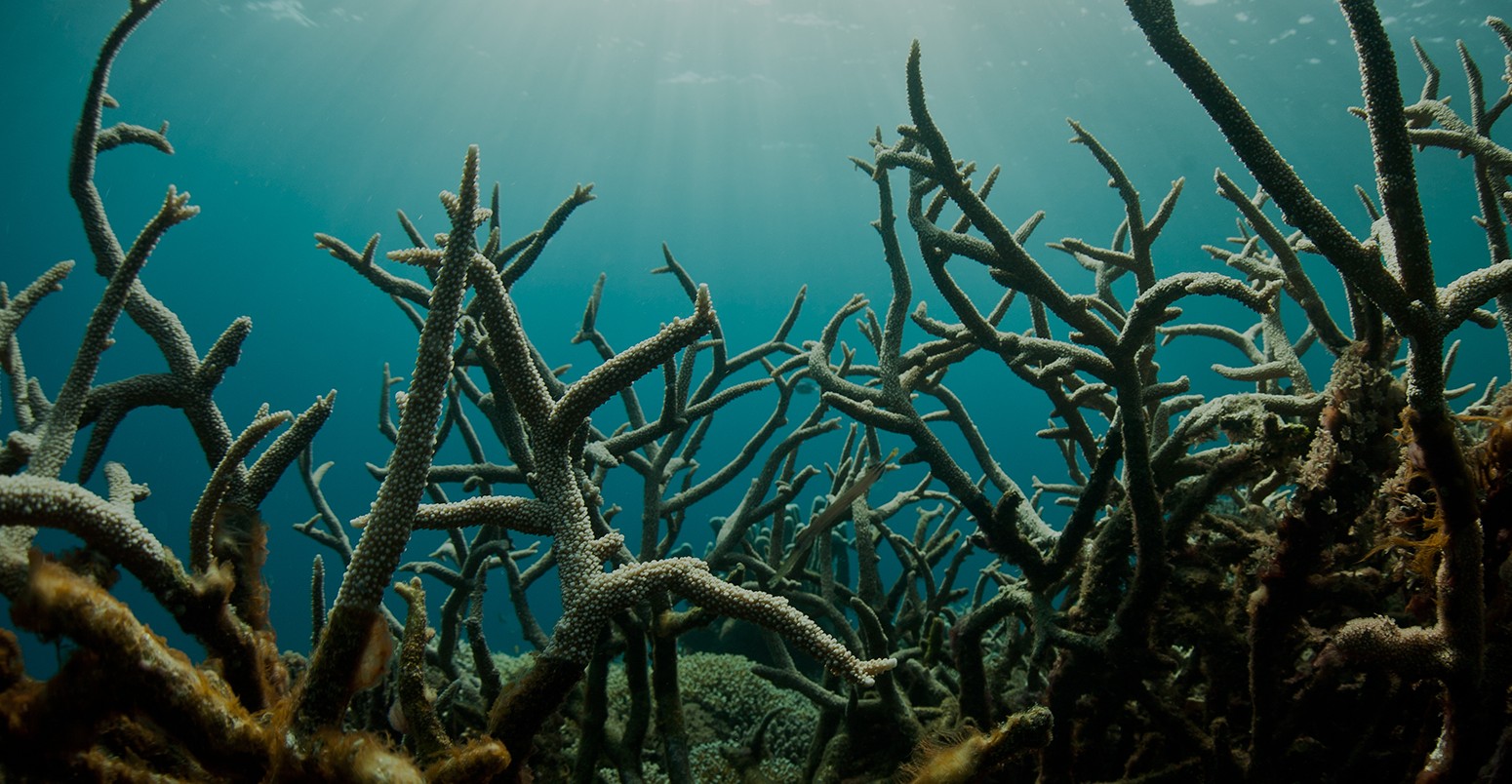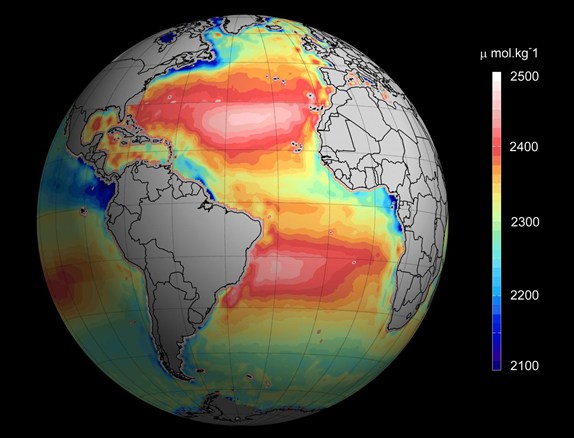
New satellite reveals places on Earth most at risk from ocean acidification
Roz Pidcock
02.17.15Roz Pidcock
17.02.2015 | 1:15pmImages beamed back from space are helping scientists monitor how vulnerable the world’s oceans are to human pressures. As the level of carbon dioxide in the atmosphere rises, it gets absorbed into the oceans, making them more acidic.
Ocean acidification is a serious but often overlooked concern facing the world’s oceans and the shellfish, corals and other creatures that reside in them, say the researchers.
The international team of scientists published some of their early findings and images in the journal Environmental Science and Technology today.
Acidifying oceans
A quarter of the carbon dioxide released into the atmosphere dissolves into our seas. This changes the seawater chemistry, making it more acidic. This is known as ocean acidification.
Since the start of the industrial era, the pH of ocean surface water has dropped by 0.1, equivalent to a 26 per cent increase in acidity.
But acidification isn’t happening at the same pace everywhere, some places are acidifying faster than others. Observing the earth from space using satellites can help identify which regions on Earth are most at risk from ocean acidification.

A global map of total ocean alkalinity, an indication of the sea surface’s ability to buffer itself against ocean acidification. Credit: Ifremer/ESA/CNES
Microwave sensors on the satellite measure the salt content – or salinity – of the water. The scientists use salinity, alongside other sea surface measurements, as a proxy for something known as the total alkalinity. This is a measure of the ocean’s ability to neutralise acid.
Changes in total alkalinity can’t directly be used to monitor ocean acidification but they can help identify areas that will acidify most for a given increase in carbon dioxide. All other things being equal, the lower the alkalinity, the more the water will acidify for a given amount of carbon dioxide.
The team is made up of scientists from the University of Exeter, Plymouth Marine Laboratory, Ifremer , the European Space Agency (ESA) and international collaborators.
Acidifying hotspots
Coral skeletons are made from a form of calcium carbonate, which can’t grow when water acidity exceeds a certain level. At least two thirds of reefs in the Greater Caribbean Region are threatened by human impacts, including ocean acidification, the paper notes.
Dr Peter Land, an expert in satellite earth observation at the Plymouth Marine Laboratory and lead author on the new paper, tells Carbon Brief:
Ocean acidification is expected to have a direct effect on calcifying organisms such as corals, making it harder for them to grow, with knock-on effects on organisms that depend on them … As with temperature, each organism has its own preferred range of pH, just like plants in a garden. When the whole ocean becomes more acidic, this can leave some organisms with nowhere to hide.
The polar oceans in the Arctic and Antarctic are particularly sensitive to ocean acidification. The Bay of Bengal is another major focus of research, partly because of unique sea water water characteristics and partly because of poor data coverage using traditional methods.
A global approach
Traditionally, scientists monitor ocean acidification using instruments deployed from research ships at sea. But information gathered this way is limited by where ships travel to.
Dr Jamie Shutler from the University of Exeter, who heads the research team, says:
It can be both difficult and expensive to take year-round direct measurements in such inaccessible locations. We are pioneering this data fusion approach so that we can observe large areas of Earth’s oceans, allowing us to quickly and easily identify those areas most at risk from the increasing acidification.
Scientists have also put sensors on a network of free-floating buoys, known as ARGO floats. But these don’t yet have global coverage.
The benefit of the satellite circling Earth 700 kilometres above our heads is that it gathers information from remote regions that are hard to reach on the ground, such as the Arctic.
Satellites are also a very efficient way to monitor Earth’s surface, as they take a snapshot of the whole planet every few days.
Satellite futures
Satellites have been making reliable measurements of sea surface temperature and chlorophyll, the green pigment in plants, for a couple of decades now. But they have only been capable of measuring sea surface salinity since 2009.
The ESA Soil Moisture and Ocean Salinity (SMOS) and Nasa’s Aquarius satellites measure salinity, but these are nearing the end of their lifetimes, the paper notes. The new research is the first to build a global map representative of ocean acidification from a complete set of satellite sea surface salinity data.
At the moment, Nasa’s Ocean Carbon Observatory ( OCO-2), launched in December 2014, is designed to monitor atmospheric carbon dioxide. But ocean acidification is likely to be a focus of future work, say the scientists.
Main image: A field of staghorn corals provides a thicket of branches for small reef fishes to hide in.
Updated 18th Feb 09:15 to clarify the relationship between total alkalinity and a region's vulnerability to ocean acidifcation. Many thanks for the comments leading to this correction. Updated 17th Feb 2015 15:00 to explain how carbon dioxide dissolving in the oceans relates to total alkalinity. Originally, the piece implied carbon dioxide has a direct effect on alkalinity. In fact, it has an indirect effect through changing the carbonate chemistry of seawater. This has been clarified with a couple of extra sentences.
-
New satellite reveals places on Earth most at risk from ocean acidification

